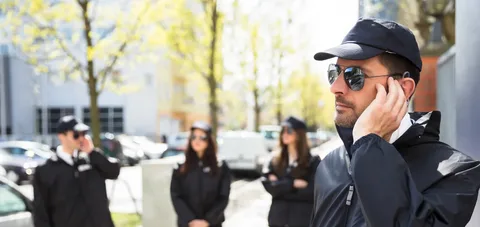Organizing private events or managing public venues comes with a significant responsibility—ensuring the safety and security of every attendee. Whether it’s a wedding, concert, corporate gathering, or festival, comprehensive safety planning is essential to prevent incidents and create a comfortable environment. Many event organizers turn to Event Security Services in Bronx, NY to manage risks, control crowds, and provide peace of mind for both hosts and guests.
Understanding the Importance of Event Security
Security is not just about preventing theft or stopping fights; it’s about proactively planning for all potential risks. This includes medical emergencies, fire hazards, natural disasters, and unexpected crowd surges. In today’s world, the threat of violence or terrorism has also made strong event security protocols a necessity, not a luxury.
Why Safety Should Be a Priority
-
Legal Responsibility: Event organizers can be held legally liable for accidents or injuries on the premises.
-
Reputation Management: One security lapse can harm your brand or organization’s image.
-
Guest Experience: Attendees feel more comfortable and enjoy the event more when they feel safe.
-
Emergency Preparedness: Being equipped to handle the unexpected can save lives and property.
Key Safety Measures for Private Events
When it comes to private events, like weddings, birthdays, or private corporate parties, the scale may be smaller, but risks still exist. These events often take place in open or semi-private venues, such as backyards, event halls, or restaurants.
1. Guest List and Access Control
-
Use invitation-only access and verify guests at the entrance.
-
Employ security personnel or ushers to monitor entry points.
-
Consider using electronic check-in systems to track who is present.
2. Venue Risk Assessment
-
Inspect the venue in advance for potential hazards (slippery floors, blocked exits).
-
Ensure fire extinguishers and emergency exits are available and accessible.
-
Check for electrical safety, especially if using temporary lighting or sound systems.
3. On-site Security Personnel
-
Have trained security staff or guards present, even for small gatherings.
-
Station personnel at key areas: entrances, parking lots, and around sensitive assets (gift tables, equipment).
-
Ensure guards are in communication via radios or phones.
4. Emergency Response Plan
-
Create and share an emergency plan with all staff and vendors.
-
Include protocols for medical emergencies, fires, and evacuations.
-
Make sure all exits are clearly marked and unobstructed.
Safety Measures for Public Venues and Large Events
Large-scale public venues like arenas, stadiums, and community parks require a much broader and more robust security approach due to higher foot traffic and greater exposure to threats.
1. Crowd Control Strategies
-
Use barricades, ropes, and signage to guide traffic flow and prevent overcrowding.
-
Schedule entry times to stagger arrival of guests.
-
Employ crowd management personnel to direct and control attendee movement.
2. Surveillance and Monitoring
-
Install CCTV cameras throughout the venue, especially in entry/exit points, food courts, and parking lots.
-
Use facial recognition technology or scanners at larger public events.
-
Have a command center where surveillance feeds are monitored in real-time.
3. Communication Systems
-
Provide staff and security teams with two-way radios.
-
Use public address systems to communicate important messages to guests.
-
Coordinate with local law enforcement and emergency services for direct contact during emergencies.
4. Health and Safety Protocols
-
Set up hand sanitizing stations across the venue.
-
Have trained medical staff or EMTs on-site for large events.
-
Ensure proper ventilation in indoor settings and sufficient water stations in outdoor areas.
Integrating Technology into Event Safety
Modern safety measures have evolved with advancements in technology. Event organizers are increasingly using mobile apps, sensors, and AI-powered tools to manage safety more efficiently.
Popular Tech Tools for Event Safety
-
RFID Wristbands: Help track attendee movement and verify identity.
-
Mobile Apps: Provide real-time updates, maps, and emergency alerts to attendees.
-
Drones: Used for aerial surveillance in large open spaces.
-
Facial Recognition: Speeds up check-in and flags unauthorized entries.
Choosing the Right Security Partner
Hiring the right professionals is crucial. A qualified security team does more than just stand guard—they assess risks, create plans, manage emergencies, and provide reassurance to guests.
What to Look For in an Event Security Provider
-
Experience: Prefer companies with experience handling events similar to yours.
-
Certifications: Look for licensed and insured professionals.
-
Custom Plans: Choose a provider who creates tailored security strategies based on your event’s unique needs.
-
Strong Communication: The ability to collaborate closely with event staff and law enforcement is key.
Legal and Regulatory Considerations
Depending on your event’s size and location, you may need to comply with local safety laws and obtain permits.
-
Always check with the venue and local authorities about requirements.
-
File for any necessary event permits and insurance policies in advance.
-
Be aware of noise ordinances, fire code regulations, and public health requirements.
Final Thoughts
Whether you’re planning an intimate birthday party or a large public concert, prioritizing safety is essential. From pre-event planning to on-the-ground implementation, every detail counts. Collaborating with trusted Event Security Services in Bronx, NY ensures that your event is not only successful but also secure. Attendees deserve peace of mind—and the right safety strategy will deliver it.



